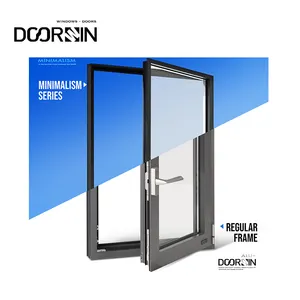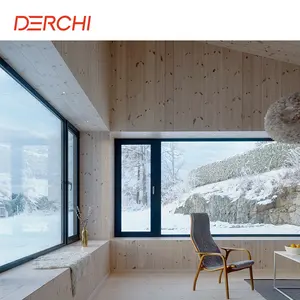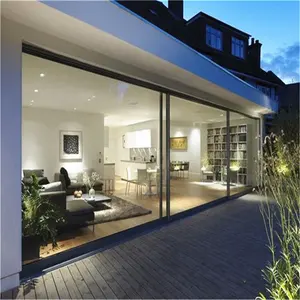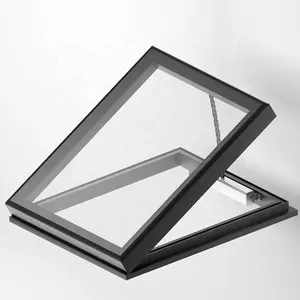Introduction
Tempered glass has become a game-changer in the world of architecture and interior design, offering a unique blend of aesthetic appeal and safety. This article explores the manufacturing process, key characteristics, and the reasons behind the growing popularity of tempered glass. We will also discuss its aesthetic and safety benefits, and guide you through the process of switching to tempered glass windows.
Understanding Tempered Glass
Also known as safety glass, tempered glass is manufactured through a process of extreme heating and rapid cooling, making it much harder than standard glass. This unique characteristic makes tempered glass a preferred choice for various applications where increased safety standards are necessary.
The Manufacturing Process of Tempered Glass
The manufacturing process of tempered glass involves several steps. Initially, float glass is cut to the desired size. The glass is then checked for flaws and washed to remove any dust or debris. It is then heated in a furnace at temperatures over 600 degrees Celsius. Finally, the heated glass undergoes a cooling process, known as 'quenching', which makes tempered glass incredibly strong.
Key Characteristics of Tempered Glass
Tempered glass is a safety glass that is four to five times stronger than annealed glass. It has higher thermal strength, able to withstand high temperature changes up to 250°C. Despite its strength, tempered glass maintains the light transmission and solar radiant heat properties of normal glass. It cannot be cut or altered after tempering. One unique characteristic is its breakage pattern; when broken, it disintegrates into small, relatively harmless globules, reducing the risk of injury.
Aesthetic Advantages of Tempered Glass Windows
Tempered glass plays a pivotal role in enhancing aesthetics in modern architecture and interior design. Its remarkable transparency brings a sense of spatial openness, making rooms appear larger. Moreover, it allows light to pass through unobstructed, creating a brighter, more inviting atmosphere. Tempered glass offers versatility in design and can be used in various applications including windows, adding a touch of sophistication and modernity.
Enhancing Architectural Design
Tempered glass can significantly enhance the architectural design of a building. Its clear and transparent nature allows natural light to enter, creating a brighter and more inviting space. Furthermore, tempered glass can be tinted or treated with coatings to add color or reduce glare, demonstrating its versatility in a wide range of design applications.
Promoting Natural Light and Views
Natural light in architecture enhances the quality of spaces, making them appear larger and more inviting. This is particularly true when using tempered glass windows, which allow for a natural flow of light into the building. Proper control of sunlight through these windows can also enhance the quality of interior decorations. Furthermore, natural light improves our mood, enhances morale, and increases energy levels. In the context of office environments, it plays an important role in better health, reduced absenteeism, and increased productivity.
Safety Benefits of Tempered Glass Windows
Tempered glass, a specific type of safety glass, is designed to enhance safety around glass structures. It undergoes a high heat treatment and special cooling process, altering its breakage pattern. Instead of shattering into sharp, dangerous shards, tempered glass crumbles into small, granular pieces, significantly reducing the risk of injury. This makes tempered glass ideal for use in areas where humans are in close proximity to glass surfaces that could potentially break and cause harm.
Increased Strength and Durability
Tempered glass is renowned for its strength and durability. It is 4-5 times stronger than standard annealed glass due to a unique toughening process, making it resistant to tensile stress and impact-related breakage. It can withstand harsh weather conditions, stress from temperature fluctuations, and even attempts at forced entry. This is what makes tempered glass durable and long-lasting.
Safe Breakage Pattern
Tempered glass, when shattered due to impact, breaks apart into thousands of tiny, relatively harmless cubes of glass. These cubes are far less likely to cause injury if they fly towards someone or when handled. Unlike traditional window glass that breaks into large, sharp, jagged shards, tempered safety glass mitigates the risks of human injury.
Heat Resistance
Tempered glass is known for its heat resistance, capable of withstanding temperatures up to 470 degrees Fahrenheit. This makes it an ideal choice for windows, especially in areas that may regularly come into contact with heat. The heat resistance of tempered glass contributes to its overall safety and durability, making it a preferred choice for various applications.
Revolutionizing Your View: Making the Switch
Tempered glass is not just tougher, but also more resistant to heat and breakage, making it ideal for areas with high risk of contact and temperature changes. It's often used in architectural situations like windows, glass railing, wall cladding, shelving, doors, and showers. It's also required by local building codes in certain situations. Tempered glass is considered a safety glass product as it breaks into smaller pieces, reducing the risk of serious injury.
Considerations When Installing Tempered Glass Windows
When installing tempered glass windows, it's crucial to remember that the glass cannot be cut or modified after tempering. The glass is cut to size before undergoing the intense heat and rapid cooling process that strengthens it. If you attempt to modify tempered glass, it will break. Therefore, accurate measurements are essential before the tempering process. Also, ensure your windows are up to code, as certain criteria require the use of safety glass like tempered glass.
Case Studies of Tempered Glass Window Transformations
Several incidents of spontaneous glass breakage in high-rise buildings have led to a reconsideration of the types of glass used in such applications. The incidents occurred exclusively with tempered glass, which despite its strength and safety glazing capabilities, is vulnerable to certain types of failures. Causes include poor edge quality, frame-related breakage, and thermal stress. In response, organizations have recommended the use of laminated tempered glass or heat-strengthened glass to enhance safety.
Conclusion
In conclusion, tempered glass windows offer a transformative approach to architectural design, enhancing aesthetics while ensuring safety. Their unique manufacturing process results in a product that is not only stronger and more durable than standard glass, but also safer due to its unique breakage pattern. The aesthetic advantages of tempered glass, including its ability to promote natural light and views, are pivotal in modern architecture and interior design. However, it's crucial to remember that tempered glass cannot be cut or modified after tempering, necessitating accurate measurements before the process. Case studies have also highlighted the need for further safety enhancements, such as the use of laminated tempered glass or heat-strengthened glass. Therefore, while tempered glass windows revolutionize our view, it's essential to consider all aspects before making the switch.

































 浙公网安备 33010002000092号
浙公网安备 33010002000092号 浙B2-20120091-4
浙B2-20120091-4